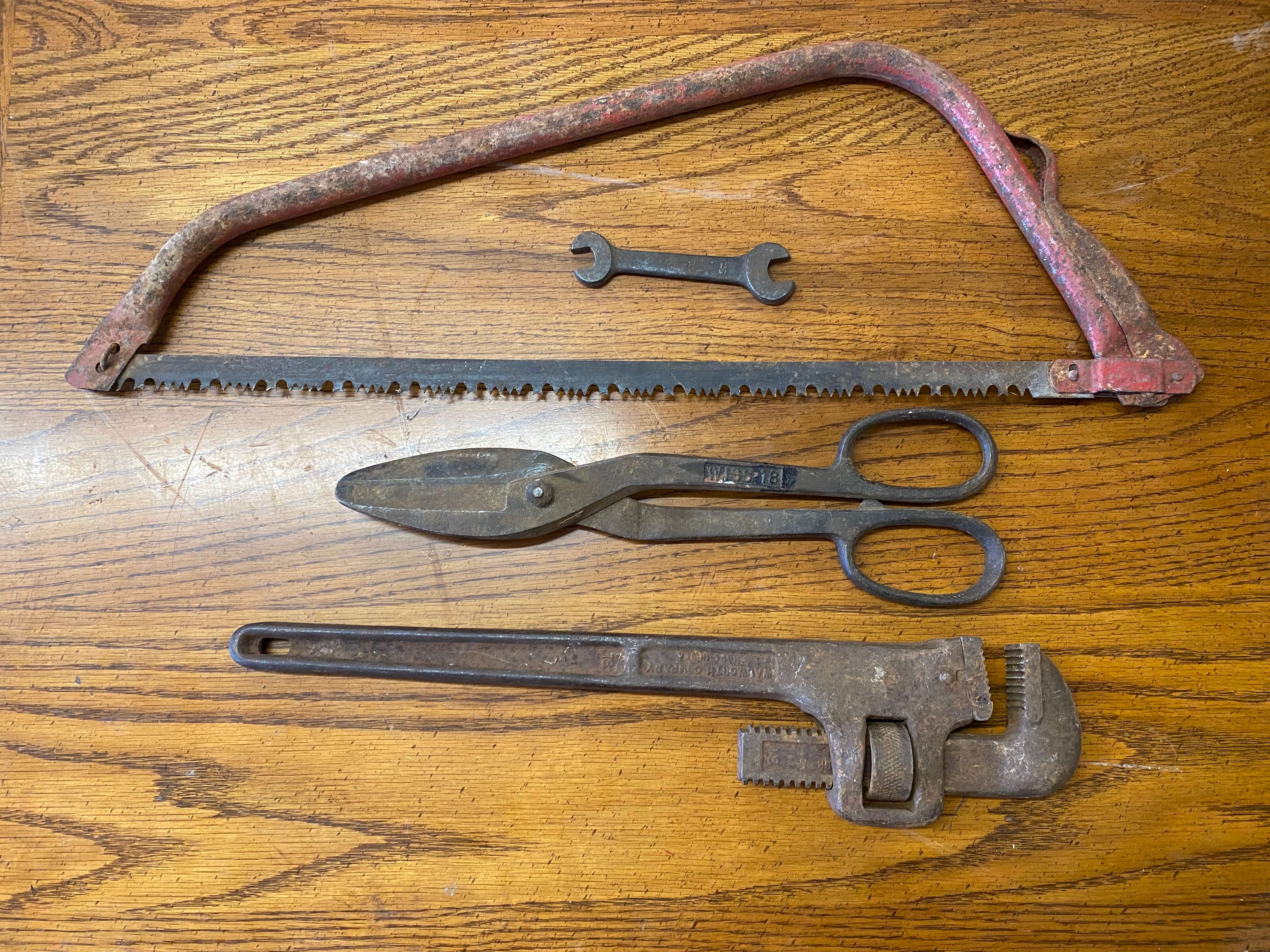
One of our most popular departments is the tool department. There’s always someone sorting through shelves and boxes, hoping to find a hidden gem. Sometimes these gems shine as is – they were donated by someone who deeply cared for the tool or they’re barely used it. But often times, the tools we have in stock are diamonds in the rough. Pliers that haven’t been oiled, saws that haven’t been sharpened, and sledgehammers with cracked handles. With a bit of love, they can soon earn their keep during your next project. Here are some tips and tricks for restoring old hand tools. This is not meant as a comprehensive tool restoration guide, but more as a means of encouraging you to give tool restoration a try.
Broken wooden handles
A broken wooden handle is easier to deal with than you might imagine. If hardware affixes a wood handle to the tool – in the case of a hand saw – remove the hardware. For hammers, screwdrivers and other tools, cut the handle off as close to the tool as possible and place your tool in a machinist’s vice. Knock out the remainder of the handle using a punch. New handles can be purchased at most major tool and hardware stores.
Corroded metal hand tools
It takes a bit of elbow grease to get rid of pitted rust, but it’s so worth it. For deep seated rust, begin by removing as much rust as possible with a wire brush and then soak in white vinegar. If the tools still have handles, do your best to keep the wood from getting wet. If the handle is worse for the wear, remove it. When soaking, check every few hours to ensure the rust is gone, but you’re not degrading the tool. When the majority of rust is gone, remove it from the vinegar, dry it, and coat it with a thin layer of mineral oil to prevent flash rust during the cleaning process. Next, run the metal through a wire wheel bench grinder and then belt sander to remove the deeper pits and smooth the tool. Thoroughly clean it to remove any metal residue. If the tool has moving parts, like with pliers, apply some lubricant. A coat of finish or metal paint will complete your restoration nicely.
Dull saws and blades
Precision tools, like hand tools should be disassembled, with corroded parts removed from clean parts, and wooden parts separated from metal. Treat rusted non-precision parts similar to other corroded metal hand tools. For plane blades and chisels, lap with a succession of sandpapers beginning with 60 grit and proceeding through 1,000 grit. By taping the sandpaper to a flat surface and using a cutting lubricant, you can ensure the edge will come out flat and smooth.
For hand saws, once the saw has been cleaned of rust and pits, sharpen the blade. This works best by clamping the blade between two wooden pieces, allowing the teeth to stay outside of the wood. Use files to sharpen the teeth and then reassemble.
To dig deeper, check out these resources:
